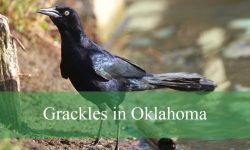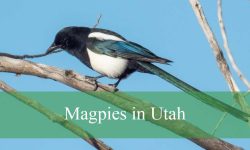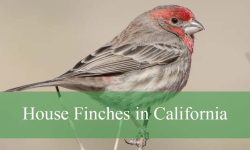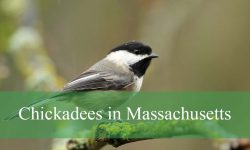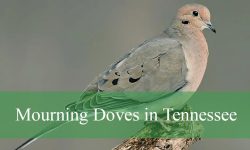Greater roadrunners are some of the most captivating birds living across Nevada’s rugged landscapes. Their long legs, streaked plumage, and confident movements give them an unmistakable presence in deserts, valleys, and shrublands. Many Nevadans have seen these birds dart across roads or stride through open terrain yet few understand how remarkable they truly are.
Nevada’s dry climate might seem harsh for wildlife but roadrunners are perfectly adapted to the state’s heat, sand, and sparse vegetation. They move through the environment with ease. They survive temperature extremes. They hunt with agility and intelligence that surprises even experienced birdwatchers.
This article uncovers hidden facts about greater roadrunners in Nevada. Their behaviors, ecological roles, nesting rituals, seasonal rhythms, and desert adaptations reveal a bird whose life is far more complex than most people ever realize.
Understanding Greater Roadrunners in Nevada

What Greater Roadrunners Really Are
The greater roadrunner, scientifically known as Geococcyx californianus, belongs to the cuckoo family. Unlike the tree dwelling cuckoos familiar in other parts of the world, roadrunners are ground oriented birds with strong legs and streamlined bodies.
Their large crests, expressive eyes, and long tails create a dynamic silhouette. Their plumage is a mix of browns, creams, and streaks that blend perfectly into desert terrain. This camouflage helps them move silently and stay hidden while hunting.
Why Nevada Is Ideal Habitat
Roadrunners thrive in arid landscapes. Nevada’s desert basins, sagebrush flats, Joshua tree woodlands, and rocky slopes provide perfect conditions. These areas offer the insects, small vertebrates, and open ground that roadrunners rely on.
Nevada’s dry air and intense sunlight present challenges for many species, but roadrunners have evolved remarkable adaptations. Their physiology allows them to conserve water. Their hunting strategies depend on open visibility. Their movement patterns follow the changing seasons.
Where Roadrunners Live Across Nevada
Residents may spot roadrunners in the Mojave Desert of southern Nevada, Great Basin shrublands, open valleys near Reno and Carson City, and even suburban areas where desert habitat persists.
They prefer low brush, scattered rocks, and open space where they can move quickly. Their presence in semi urban areas continues to grow as long as natural patches remain available.
Hidden Behaviors Few People Notice
The Surprisingly Silent Hunter
Roadrunners move with quiet precision. They stalk prey without disturbing the gravel beneath their feet. Their slow creeping movements resemble those of larger predators. Only when striking do they reveal their speed.
Their Intelligence Exceeds Expectations
Roadrunners learn from their environment. They navigate territories efficiently and remember reliable feeding spots. They adjust hunting strategies depending on prey availability. Their problem solving skills resemble those of other highly intelligent desert birds.
Their Territorial Awareness
Pairs often maintain territories year round. They travel predictable routes each morning and evening. They know shelter locations, sun exposure patterns, and areas with active prey populations.
Anatomy Built for the Desert
Long Powerful Legs
Their long legs give them impressive speed. While not built for long distance running, they excel at short bursts of speed across uneven ground.
Long Tail for Balance
The tail acts as a counterweight during fast turns. It helps stabilize the body when accelerating or pivoting suddenly.
Specialized Feet
Roadrunners have zygodactyl feet with two toes facing forward and two facing backward. This configuration supports traction and agility across rocky and sandy terrain.
Desert Adapted Physiology
Roadrunners conserve moisture by excreting concentrated salts. Their nasal glands help remove excess salt without losing much water. This adaptation allows survival in extremely dry habitats.
Feeding Habits in Nevada
Active Predators
Roadrunners are predators more than they are seed eaters. They rely heavily on lizards, insects, small mammals, and even small birds. Their sharp bill delivers precise impacts to subdue prey quickly.
Hunting Techniques
- They use several methods:
- They stalk slowly through brush.
- They chase fast moving prey in sudden bursts.
- They ambush from shaded areas.
- They watch from low perches before descending quietly.
- Their hunting strategies shift depending on time of day and temperature.
Seasonal Diet Changes
In spring and early summer insects, small reptiles, and young rodents form most of their diet. In late summer and fall they incorporate more seeds, fruits, and insects emerging after monsoon storms.
In winter their diet becomes opportunistic relying on whatever small prey they can locate.
Speed Hunting
Roadrunners can chase prey across short distances with astonishing acceleration. Their quick reflexes and precise movements allow them to catch lizards, crickets, and other fast moving animals.
Adaptations to Nevada’s Extreme Climate
Heat Management
Roadrunners use shade, body posture, and timing to manage heat. They spread their wings to expose dark skin patches that absorb sunlight during cool mornings. Later they flatten their feathers to reflect intense midday heat.
Cold Morning Strategies
Desert mornings can be surprisingly cold. Roadrunners warm themselves by sunning with feathers spread slightly to absorb early warmth. This behavior resembles reptiles warming their bodies.
Water Conservation
Roadrunners extract moisture from prey. They rarely need standing water. This allows them to live far from water sources that limit other wildlife.
Nesting Behavior of Greater Roadrunners
Nest Site Selection
Roadrunners build nests in low trees, desert shrubs, cactus clusters, or on ledges. They choose stable structures with partial shade and minimal predator access.
Nevada’s varied desert shrubs offer excellent support.
Building the Nest
Nests consist of sticks, twigs, grasses, feathers, and sometimes snake skins or other unusual materials. Roadrunner nests are firm and slightly bowl shaped.
Both members of a pair participate, though females often take the lead.
Egg Laying and Raising Young
Roadrunners lay two to six eggs. The incubation period lasts nearly three weeks. Both parents incubate, protect, and feed the chicks.
Young roadrunners grow rapidly and leave the nest earlier than many birds. Their early independence is essential for survival in harsh landscapes.
Extended Parental Care
Even after fledging, young birds follow adults for several weeks. They learn feeding strategies, territory patterns, and daily rhythms.
Roadrunners’ Vocal Communication
The Cooing Song
During spring and early summer males produce a low cooing sound. The call resembles a soft mellow sequence that carries across open areas.
Clucking and Chattering
Roadrunners communicate through a variety of clicks and chatters. These sounds indicate alertness, mild agitation, or communication between pair members.
Bill Clacking
Bill clacking occurs during territorial disputes or intense excitement. The sound echoes across the desert like a short wooden snap.
Roadrunner Social Structure
Pair Bonds
Many roadrunners form long term pair bonds. Pairs travel territory together throughout much of the year. Their coordinated movements help them maintain familiarity with seasonal changes.
Territory Defense
Pairs defend territories with calls, posturing, and movement patterns rather than physical conflict. They prefer to avoid unnecessary energy expenditure.
Coordinated Foraging
Pairs sometimes hunt cooperatively. One bird may flush prey while the other positions itself strategically. This efficiency enhances survival especially when raising young.
Roadrunners Across Nevada Landscapes
Mojave Desert
Southern Nevada hosts large populations. Roadrunners thrive among creosote bushes, Joshua trees, and desert washes. The region’s warm climate supports year round hunting activity.
Great Basin Shrublands
In central and northern Nevada roadrunners appear in sagebrush country. Their presence is more scattered but still significant.
Mountain Foothills
Lower elevation foothills offer shade, insects, and grasses that support roadrunner foraging. They prefer dry slopes with mixed vegetation.
Suburban Edges
In some Nevada towns roadrunners venture near homes. Landscaped yards, open lots, and desert edges create mixed habitats.
Roadrunner Interactions With Other Nevada Wildlife
With Lizards
Lizards form a large part of the roadrunner’s diet. Nevada’s desert lizards provide predictable prey sources across warm months.
With Snakes
Roadrunners show caution but confidence around snakes. Their quick reflexes allow safe interaction from a distance.
With Insects
Grasshoppers, crickets, beetles, and spiders represent essential protein sources. After rainstorms insect numbers spike which roadrunners exploit efficiently.
With Birds
Roadrunners may prey on small birds or nestlings. They also interact indirectly by competing for insects and shade resources.
Myths and Misconceptions About Roadrunners
Myth: Roadrunners Spend All Day Running
They run quickly but spend more time walking slowly, stalking, and observing.
Myth: They Live Only in Open Desert
They also inhabit shrublands, foothills, and riparian corridors.
Myth: Roadrunners Are Solitary
Pairs often remain together throughout the year.
Myth: They Require Water Sources
They obtain most moisture from prey.
The Ecological Role of Roadrunners
Predator Balance
Roadrunners help regulate populations of insects, small mammals, and reptiles. Their predatory presence influences prey behavior and distribution.
Desert Cleanliness
As opportunistic feeders they help clean up small carrion and organic debris across desert landscapes.
Seed Distribution
While mostly carnivorous they occasionally eat fruits. Seeds pass through digestion and contribute to plant dispersal.
Seasonal Rhythms of Nevada Roadrunners
Spring
Nesting season begins. Territory calls increase. Prey becomes more abundant as insects emerge.
Summer
Young roadrunners hatch and learn survival skills. Pairs forage actively. Prey remains abundant but heat management becomes critical.
Autumn
Temperatures drop slightly. Prey populations shift. Roadrunners adjust feeding patterns and expand movement ranges.
Winter
Cold mornings challenge roadrunners. They use sunning behavior to warm themselves. Their diet becomes opportunistic and diverse.
Roadrunner Adaptability in Changing Landscapes
Urban Expansion
As cities grow some roadrunners adapt by using fragmented habitat patches. They adjust movement patterns to navigate new obstacles.
Climate Change
Warming temperatures may shift roadrunner ranges northward. Nevada’s climate already supports strong populations that may grow with warmer winters.
Habitat Fragmentation
Roadrunners succeed best where open ground remains. Preserving corridors and shrublands ensures long term stability.
Daily Life of a Roadrunner in Nevada
Sunrise
Roadrunners begin moving early to take advantage of cooler temperatures. They warm in the rising sun before starting their hunting rounds.
Midmorning
This is prime hunting time. Insects and reptiles awaken. Roadrunners scour low shrubs and open sand.
Afternoon
During the hottest hours they seek shade. Activity slows but does not cease entirely.
Late Afternoon
Activity increases again. Birds cross open areas in search of evening prey.
Night
Roadrunners roost in shrubs or low trees. They remain alert to subtle desert sounds.
FAQs About Roadrunners in Nevada
Are roadrunners common in Nevada
Yes. They appear widely across desert and semi desert regions.
What do roadrunners eat
They eat insects, lizards, small mammals, spiders, fruits, and opportunistic prey.
Do they migrate
No. Roadrunners remain in their territories year round.
How fast do they run
They run in short bursts at impressive speeds but spend more time walking.
Do roadrunners mate for life
Many form long lasting pair bonds.
Where do they nest
In shrubs, low trees, or desert structures with partial shade.
Are they active at night
They are primarily diurnal and rest at night.
Conclusion
Greater roadrunners in Nevada offer a remarkable glimpse into desert life. Their intelligence, stamina, adaptability, and hunting strategies make them one of the state’s most intriguing birds. They reveal how wildlife can flourish in landscapes that appear harsh to humans but are perfectly suited to their unique abilities.
From their sun warming rituals to their silent stalking movements, roadrunners reflect the spirit of Nevada’s desert ecosystems. Observing them enriches understanding of the region’s natural cycles. Whether seen crossing a dusty trail or perched on a shrub at dawn, these birds embody the beauty and resilience of the Southwest.

